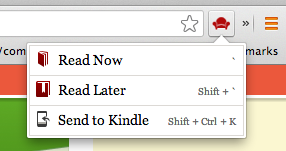The whole culture has become afflicted with ADD, so much so that anyone or any business that can maintain its focus has an almost unfair advantage in the marketplace.
– Dave Ramsy, Entreleadership.
We live in the age of hyper distraction. There are millions of things screaming for and competing to win our attention every second of the day. We start with one task and quickly find ourselves sidetracked by something else that is completely irrelevant. It’s hard for us to read and complete one book before picking up another one. It’s hard for us to watch the same TV channel without switching. As Dave stated in his excellent book Entreleadership, the whole global culture is afflicted with Attention Deficit Disorder or simply ADD.
I see modern ADD more as a behavioural and cultural problem than a biochemical imbalance of hormones. Of course, the biochemical side plays a role, but I believe that a large percentage of today’s ADD problem can be resolved by forming new and consistent habits – a routine if you will.
I recently realized that I am very prone to distraction myself. I realized that I recently lost my focus because of my high work load, but I also realized that it is never too late to regain that focus.
One of the first things that I did to regain my focus was to implement new rules and gradually improve my own habits. I developed a simple system and followed it very strictly to ensure that the rigidity of my routine was not broken. So far my structured system of change has worked well for me.
Knowing that many of my fellow workers in the software industry also struggle with a loss of focus, I thought it would be fun to share my system through a series of blog posts.
In this first post I’m going to talk about techniques for distraction free web surfing.
1. Work with Safari and play with Chrome
This is a simple rule, yet it will require a considerable amount of discipline. When working, I only use Safari. If something comes up that I need check in HackerNews or any of my personal accounts, I do it in Chrome. I’m a webkit browser fan. So I use Chrome and Safari. You can use whatever the browsers that you’re most comfortable with to implement this system.
2. Read in a second screen
When reading blogs, you may come across the so called ‘Call to action,’ distracting elements in sidebar and other distracting elements throughout the content itself. These elements are designed to catch our focus often more so than the blog post itself. While some articles certainly are not worth finishing, when reading an important article, these links, images and other distractions can become tempting to click before we finish reading the article itself.
One of the techniques that I practice to prevent this is to use a reader friendly extension which helps to focus on the content. I personally prefer Clearly by Evernote. Here is why..

- It contains environment sensitive reading themes, much like in Kindle and iBooks. There are 3 different themes you can select.
- When reading technical articles and code samples worth archiving for future reference Clearly allows me to highlight and save directly to Evernote.
- Narration: This is my favorite feature. If I don’t feel like reading, I can hit the play button and listen to the entire blog post with my eyes closed.
- Clean printing: I seldom print articles, but if you want to, Clearly helps you to just grab the content and remove all other page elements like the sidebar, header and of course, the adverts.
You might even be surprised to know that I even use Clearly to read long emails (Yes, long emails scare me!) Truly Clearly is one of the tools that I cannot live without.
Readability is another good alternative for Clearly. It comes with several cool features.

- You can save an article in Readability to read later.
- You can convert the article for a Kindle friendly document to read via your tablet or e-reader of choice.
- You can save the document under your readability account for future reference.
I personally like to store everything in my Evernote, since it allows offline access as well as online access. I only ever really use the ‘Read Later’ feature of Readability.
3. Turn off the Lights, please.
Another common place we tend to get distracted is YouTube. We need to admit that YouTube itself is a distractive medium particularly if you are watching a funny video clip during a tight deadline! But let assume you’re watching something related to your current work! Now say you see an interesting video listed in the ‘related videos’ listing. You click on that and get caught up on a related videos loop. Soon enough you realize that you’ve wasted 30 min on YouTube watching funny or non-work related videos even without completing the video that needs to be watched for the current task.
To avoid this ‘false loop’ I use a wonderful Chrome plugin called – Turn off light. When you need to watch a video in distraction free mode, all you need to do is click the icon in the address bar. This will fade out all the page elements except the video to a black background thereby eliminating the potential for distraction.

What’s Next?
In the next post I’ll talk about how we can force ourselves to limit browsing, how we can be social without opening Facebook or Twitter and some other tips and tricks to decrease distraction while you’re working.
How do you get distracted during the workaday? Please comment below and I’ll tell you how I combat similar problems in my workday!
